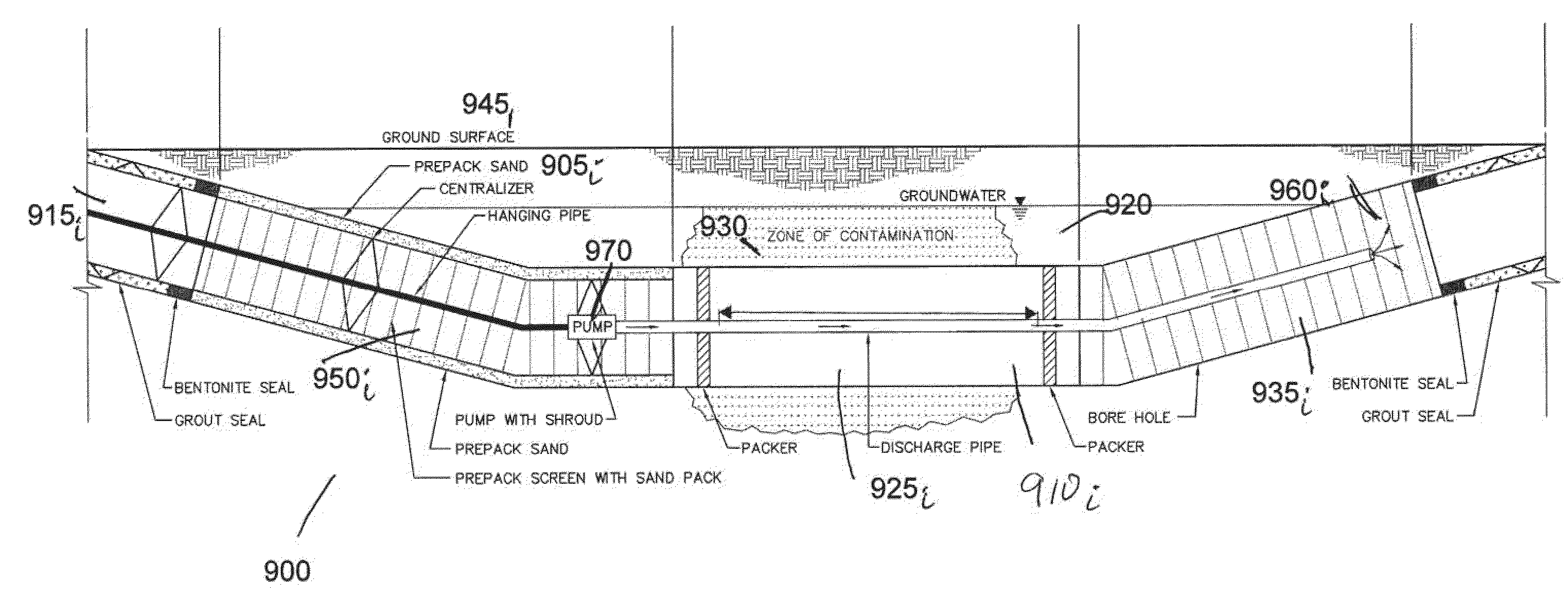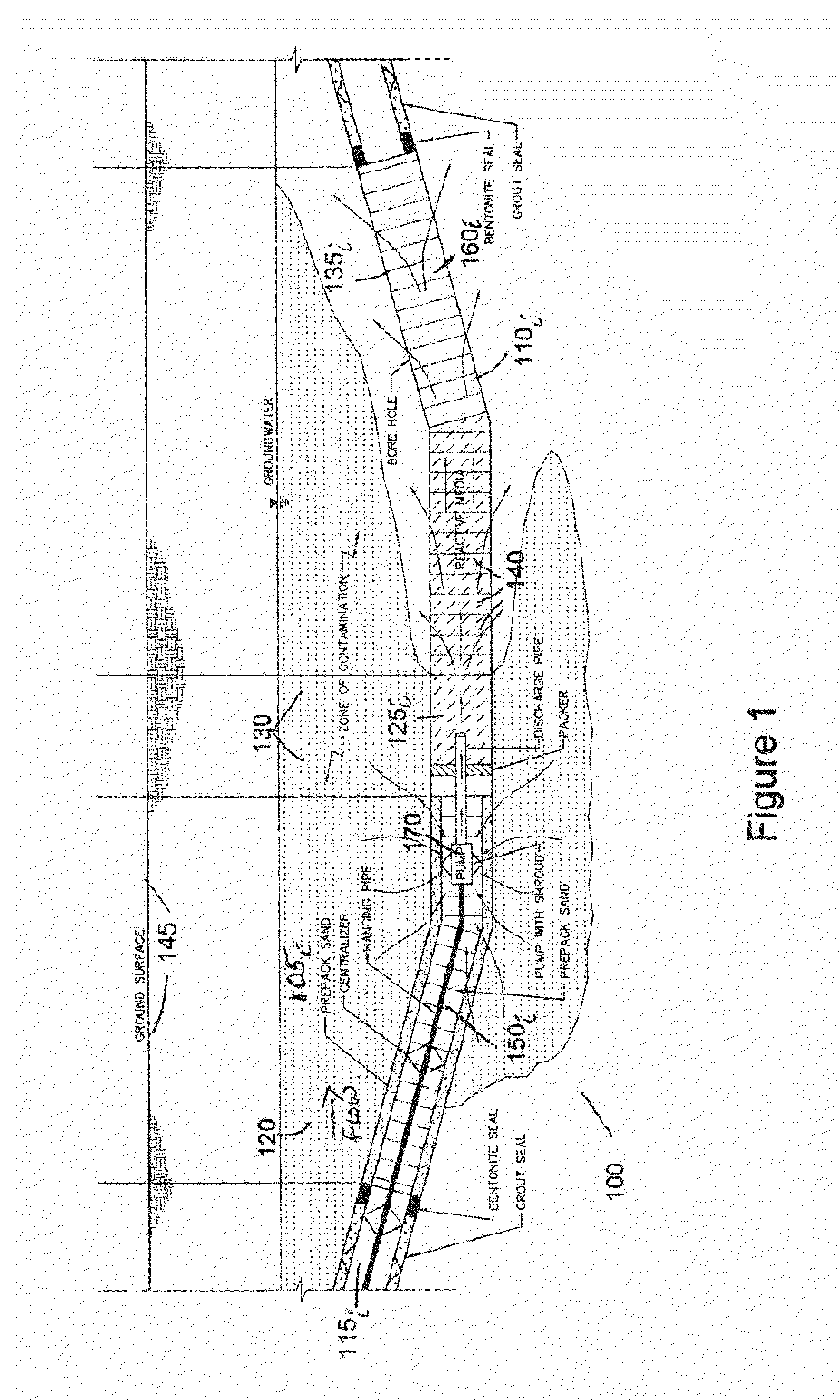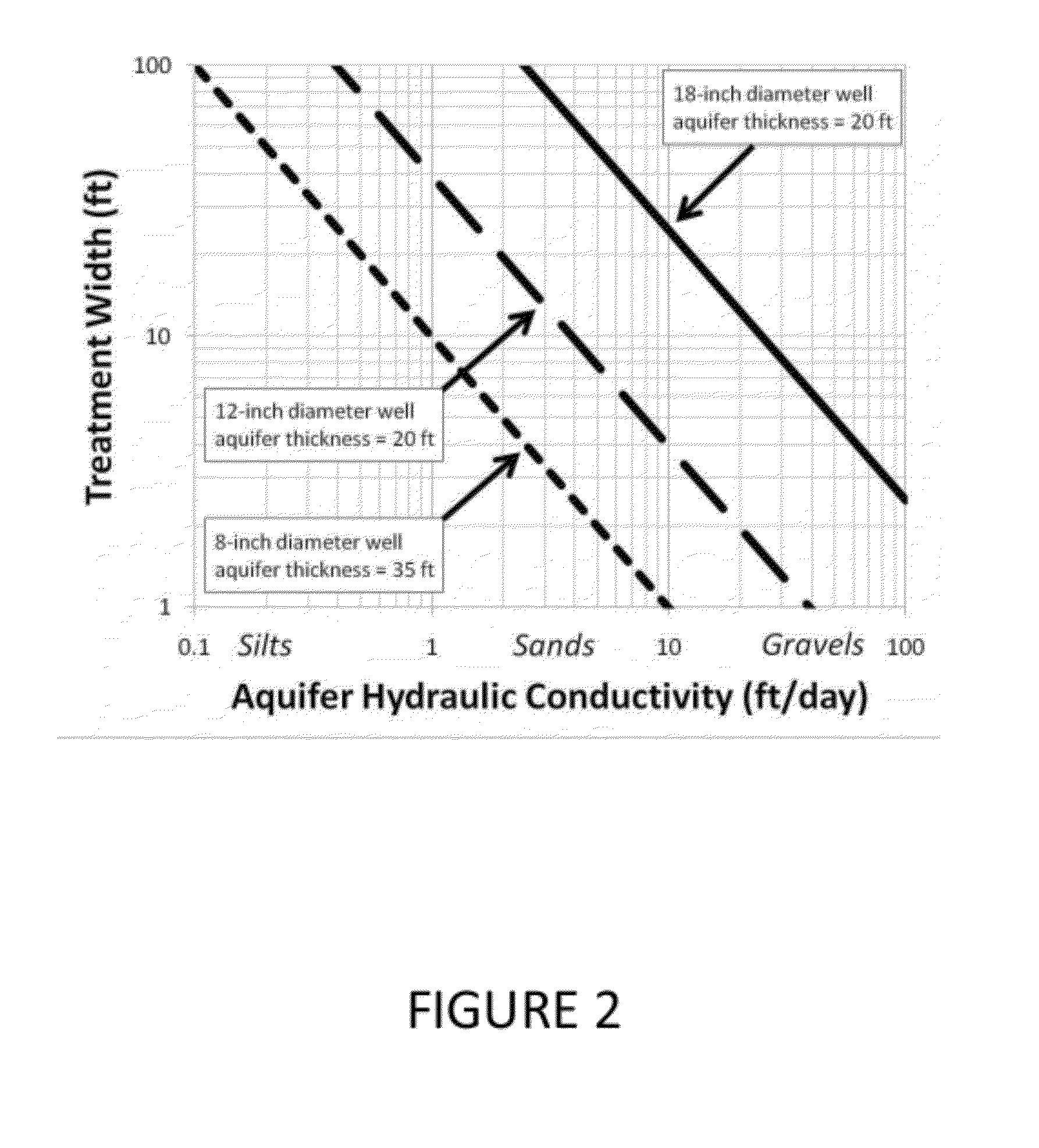Horizontal In-Well Treatment System and Source Area Bypass System and Method For Groundwater Remediation
- Summary
- Abstract
- Description
- Claims
- Application Information
AI Technical Summary
Benefits of technology
Problems solved by technology
Method used
Image
Examples
Embodiment Construction
[0034]The invention relates to a horizontal treatment (HRX) well system (also known as a horizontal in-well treatment (HIT) remediation system) comprising horizontal wells that are installed within plumes of contaminated groundwater and oriented in the general direction of groundwater flow. Each well is filled with reactive treatment media (comprising, e.g., iron, granular activated carbon, zeolite). A flow-focusing phenomenon is created by the high in-well hydraulic conductivity of the well and engineered reactive media relative to the surrounding aquifer hydraulic conductivity that passively draws impacted groundwater into the horizontal wells through a screen disposed substantially at the up-gradient portion of each well such that impacted groundwater is treated as it flows through the horizontal well. Treated groundwater then exits each horizontal well through a screen disposed substantially along the down-gradient section of the well.
[0035]According to one embodiment, the inven...
PUM
 Login to View More
Login to View More Abstract
Description
Claims
Application Information
 Login to View More
Login to View More - R&D
- Intellectual Property
- Life Sciences
- Materials
- Tech Scout
- Unparalleled Data Quality
- Higher Quality Content
- 60% Fewer Hallucinations
Browse by: Latest US Patents, China's latest patents, Technical Efficacy Thesaurus, Application Domain, Technology Topic, Popular Technical Reports.
© 2025 PatSnap. All rights reserved.Legal|Privacy policy|Modern Slavery Act Transparency Statement|Sitemap|About US| Contact US: help@patsnap.com



